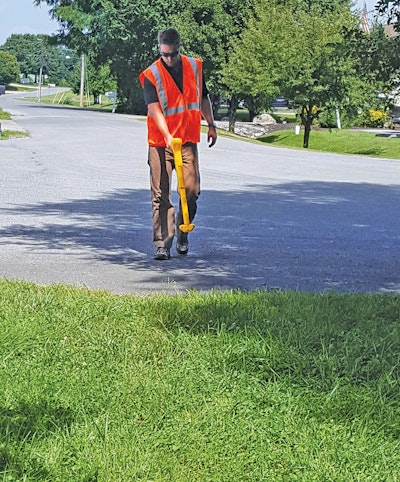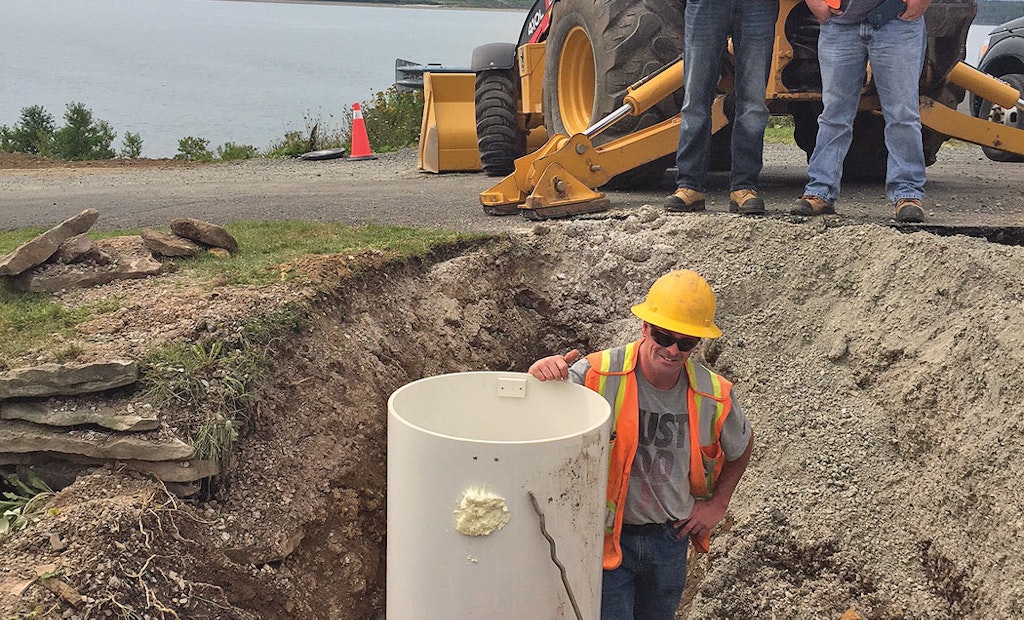Interested in Inspection?
Get Inspection articles, news and videos right in your inbox! Sign up now.
Inspection + Get AlertsCape Breton uses Hydro-Guard HG-8 to improve water quality
In the Cape Breton Regional Municipality, Nova Scotia, an estimated 10 million gallons of treated, chlorinated water flows annually into the Sydney River. Since local lobster trapping grounds are nearby, this activity causes major concern for the Department of the Environment. When the municipality exposed the trench to install a sub-surface, Hydro-Guard HG-8 automated flushing device, a 35-year old Mueller inverted key curb stop used for routing flushed water through 3/4-inch polyethylene tubing to the river was connected to the outlet of the HG-8. Despite the age of the curb stop, it still proved to be a reliable connection. With the help of a new Mueller Oriseal curb stop on the inlet side of the HG-8 and an adjustable arch base service box, a second HG-8 was softly compacted to finish the simple installation. The programming of one-hour flush events was done by local Mueller Canada Technical Sales Representative, Jeff Jensen. This installation will recover costs in less than four months and conserve more than eight million gallons of water annually. 423/209-4855; www.muellercompany.com.
Scanning technology locates defects in siphon
Problem: A large Southern California public agency recently undertook a major project to line several thousand feet of 30-inch force main beneath a heavily traveled highway. Adding to this already complicated project was a siphon with sharp bends. Due to the thickness of the liner, the bends led to wrinkles and stretching.
Solution: With the liner still under warranty, the agency decided to further investigate the liner in the siphon by using Electro Scan to locate within 1 centimeter and to quantify in gallons per minute any potential leaks in the CIPP. The technology uses a narrow band of electricity to identify all openings in a nonconductive pipe wall that go to ground. Anywhere electricity leaks, water will leak too.
Result: Electro Scan surveyed 159 feet of pipe during the night when part of the highway could be shutdown. It found six individual defects, contributing an estimated 8.17 gpm. The worst defect in the pipe represented 47.4 percent of the total estimated defect flow. The scan made it easy for the agency to identify and fix the defects. 800/975-6149; www.electroscan.com.
Tracing sonde helps pinpoint manhole cover
Problem: In order to launch a major sewer project, engineers for the city of Foreman, Arkansas, needed to locate two sewer manholes that were difficult to find. They had a general idea that they were near a commercial structure built years ago over the existing pipeline but didn’t know where to start.
Solution: Brent Hutchins from Brad Greer & Associates helped the city acquire an XTpc+ from Schonstedt Instrument Co. and made a trip to Foreman to give the engineers pointers on using a sonde to trace the pipe’s path. “We taped the sonde to a jetter and tracked it down the pipeline. I used the receiver to trace the sonde; then, we further pinpointed it with the yellow stick (a Schonstedt GA-52Cx),” he says.
Result: “Digging down about 2 feet, we found the manhole cover. Everyone was happy. And thanks mostly to the training videos on Schonstedt’s website, I looked like a hero,” says Hutchins. The work was accomplished using a pipe and cable locator and a magnetic locator, available in the form of a multipurpose combo kit. 800/999-8280; www.schonstedt.com. F








